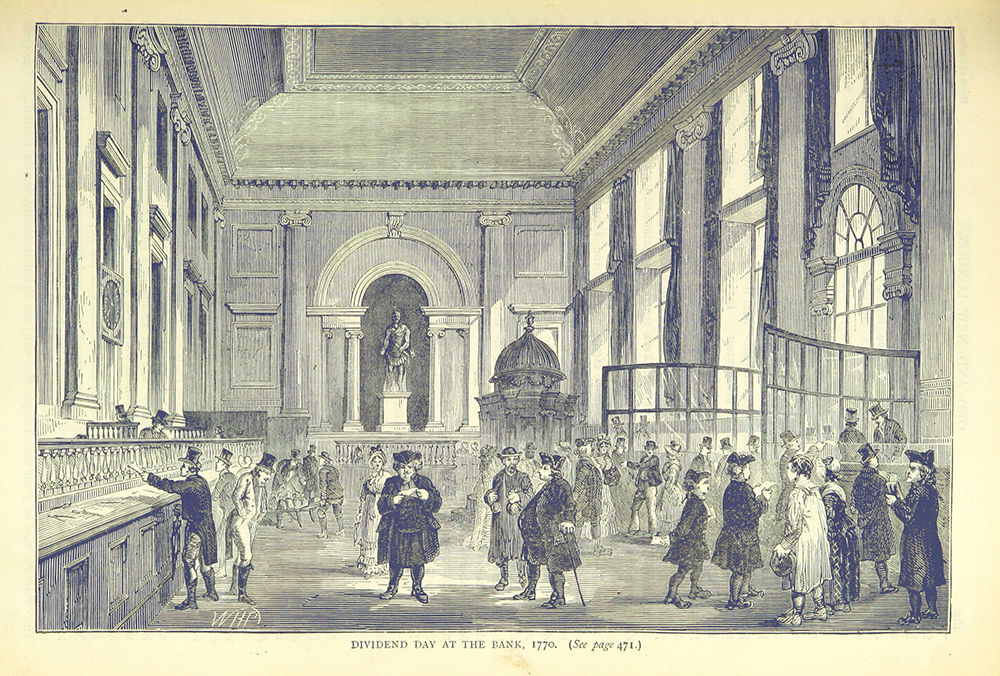Banking On It | History Today - 4 minutes read

Virtue is not a characteristic always associated with banks these days. But in Virtuous Bankers, Anne Murphy tells the important story of how, in the 18th century, the Bank of England won public confidence as the prime intermediary between the state and the many thousands of citizens who lent it money. Historians have long recognised the significance of the taxation systems that subsidised the state’s military engagements and colonial expansion, but just as vital was the willingness of people to voluntarily lend the state their money, confident that they would be repaid. In this, the Bank of England was critical.
Trust had to be earned, however, and the Bank – along with other big corporations like the East India Company – had its critics. In the late 18th century, calls for reform were growing louder. To stave off the danger of state intervention, in 1783 the Bank established a committee of inspection tasked with investigating every aspect of its operations. The detailed papers generated by this year-long investigation are at the heart of the book.
Murphy uses these sources to fashion an unconventional and compelling history. Her book is structured around ‘a day in the life’ of the Bank, beginning with unlocking the gates at 6am and preparing the premises for the daily flow of customers, and concluding with the late-night reckoning of the accounts and safeguarding the premises. This allows Murphy to draw attention to the often-overlooked processes involved in running a large-scale bureaucratic enterprise. We see these through the eyes of the inspectors, and of a customer of the Bank. A visit to the Bank was ‘a sensory experience’, Murphy tells us, with an emphasis on accessibility and visibility. When on the premises, customers could observe the clerks at work, see the ledgers documenting their accounts, watch (and listen to) government stocks being traded in the Bank’s rotunda. All this, together with the Bank’s impressive architecture, amounted to a performance of public credit, embodying the credible commitment to honour financial promises upon which the entire ‘fiscal-military state’ depended.
In this light, the Bank’s daily rituals take on a new significance. We can appreciate them as critical elements both in the public performance of trustworthiness, and the behind-the-scenes labour necessary to ensure that everything ran smoothly. As such, the Bank’s 300 or so overworked clerks (five times the number employed by the Treasury or the Admiralty at this time) emerge as the quiet heroes. In Murphy’s account, the Bank’s ‘human capital’ is humanised. We learn about office routines long before computers – or even typewriters – streamlined processes. Harassed clerks often took risky shortcuts. Tellers were supposed to store cash in lockers, but the inspectors found to their dismay that at busy times, it was not uncommon to see ‘a bag of money on the ground with the clerk holding his foot on it’. We learn about the pay (the starting annual salary of £50 had not increased since 1694) and the ways in which clerks could supplement earnings either honestly or more dubiously. We even find out about clerks’ eating habits. Though some could leave to grab a quick dinner, others ate ‘al desko’.
Murphy turns what could have been a dry bureaucratic history into a fascinating and engaging read. Above all, her book highlights the value of approaching the big questions in economic history with a sensitivity to the routines and rhythms of everyday life.
Virtuous Bankers: A Day in the Life of the Eighteenth-Century Bank of England
Anne L. Murphy
Princeton University Press, 276pp, £30
Buy from bookshop.org (affiliate link)
James Taylor is Senior Lecturer in History at Lancaster University, and co-author of Invested: How Three Centuries of Stock Market Advice Reshaped Our Money, Markets, and Minds (University of Chicago Press, 2022).
Source: History Today Feed